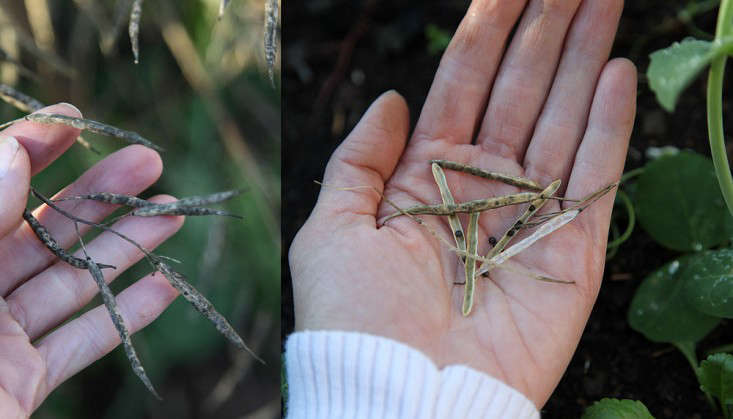I’m the first to remind friends that we’ve still got a few weeks of summer left. But in the garden, there are signs of a shift in the season as plants start to wither. Rather than yanking spent plants out of the earth, however, you should be gathering their precious seeds for next year.
Abby Meadow, from the Tend Collective, grows heirloom vegetables in her Oregon garden. She took photographs of her own seed-saving endeavors, and says, “Growing seed can be simple and intuitive. Most plants, if let be, will do what they need to do to reproduce. Typically, a plant will fruit, flower, set seed, and then wither away. As the plants wither, the seed dries up, falls off the plant, and sows itself for germination at a favorable time.
“In most cases, this is exactly how to approach saving seed for your own deliberate use. Allow the plant to take its full course, and when the seeds are fully mature and dried on the plant, it’s time to take them inside to store.”
Here is Abby Meadow’s advice for saving seeds:
Photography by Abby Meadow.









In addition to providing food for the future, Abby says that “saving seeds also provides pollen for insects during periods of the year that can otherwise be sparse. When we save seeds, pollen-producing flowers are left on the plants for beneficial insects, extra seed can be left for the birds, and the cycle of food production can continue for us gardeners.”
For advice on keeping your seeds safe for next year’s planting, see Store Your Own Seeds. And now that we’ve got you thinking about seeds, read about this intriguing resource: A Bank for Rare Seeds in Petaluma.
N.B.: This is an update of a post published September 3, 2013.








Have a Question or Comment About This Post?
Join the conversation